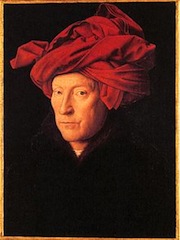 What was the vocabulary for describing an artist’s fame or failure during the fourteenth through sixteenth centuries? How did this language vary when it was voiced by one artist about another artist? What labels were used in official contracts, in the communications of a patron, or in the growing biographical/autobiographical literature? How did these descriptive terms evolve over time? One is familiar with laudatory words, such as artful, genius, or divine, and phrases, such as a second (or new) Phidias, or, to borrow the Duke of Burgundy’s praise for Jan van Eyck, “one so excellent in his art and science.” At the opposite end of the verbal spectrum, what language expressed failure? This might cover real or perceived artistic failure, incompetency, or the poisoned words of a jealous rival. One only needs to think of Cellini’s less-than-kind opinions of his contemporaries. This session welcomes specific case studies and more wide ranging linguistic investigations.
What was the vocabulary for describing an artist’s fame or failure during the fourteenth through sixteenth centuries? How did this language vary when it was voiced by one artist about another artist? What labels were used in official contracts, in the communications of a patron, or in the growing biographical/autobiographical literature? How did these descriptive terms evolve over time? One is familiar with laudatory words, such as artful, genius, or divine, and phrases, such as a second (or new) Phidias, or, to borrow the Duke of Burgundy’s praise for Jan van Eyck, “one so excellent in his art and science.” At the opposite end of the verbal spectrum, what language expressed failure? This might cover real or perceived artistic failure, incompetency, or the poisoned words of a jealous rival. One only needs to think of Cellini’s less-than-kind opinions of his contemporaries. This session welcomes specific case studies and more wide ranging linguistic investigations.
Participants must also be members of the Renaissance Society of America.
Please send an abstract of 1-2 pages, letter of interest, submission form (available from collegeart.org), and current CV by May 8 to: Jeffrey Chipps Smith, University of Texas, Austin. Email : chipps@austin.utexas.edu.
Session du 104e congrès du College Art Association (CAA), Washington, 3-6 février 2016.
http://www.collegeart.org/proposals/

Leave a Reply
You must be logged in to post a comment.